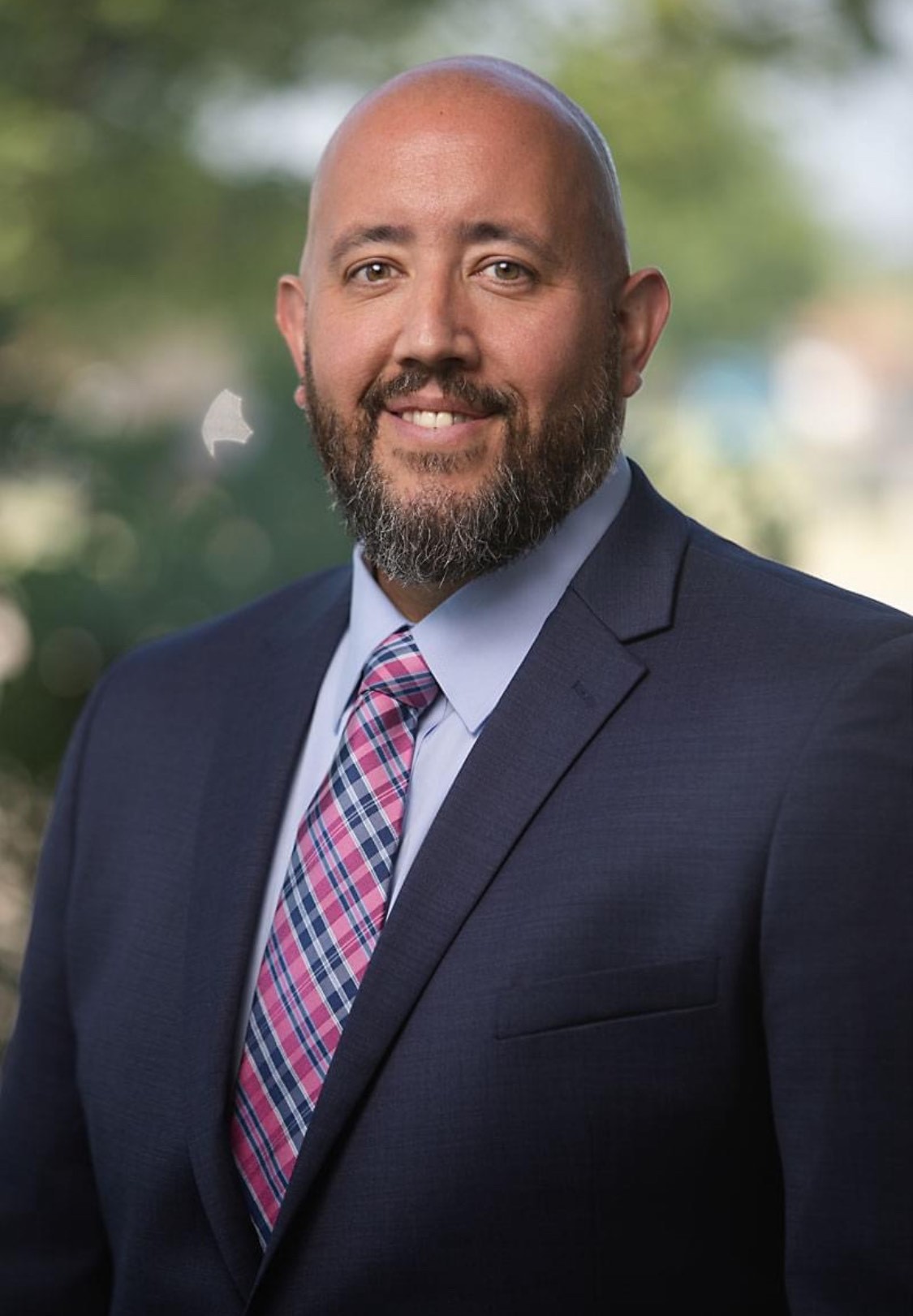
By Debbie Bunch
June 15, 2025
As vice president of operations for the Shawnee and Seminole campuses of SSM Health St. Anthony Hospital in Oklahoma, Gary Revas, DHA, RRT, RRT-NPS, is a leader in his organization and his community.
Getting there took hard work and determination, and overcoming a few setbacks along the way.
Health issues require some pivoting
Dr. Revas knew he was interested in healthcare from an early age and initially set his sights on a career in medicine. A back injury at age 22 and the birth of his daughter, however, put all that on hold.
His wife, Allison Revas, RRT, had just completed her RT training and was working at Oklahoma University (OU) Medical Center. As he learned more about the profession from her, he decided it might be right for him as well. Revas earned his Associate of Science (AS) degree from Rose State College and joined Allison in the Radiologic Technology (RT) department at OU.
After a couple of years on the job, though, he decided there must be more out there and returned to school to pursue a degree as a CNRA. He was in his first semester when another illness struck that put him in a hospital bed for 21 days.
“This experience changed my view on what we do each day,” said Revas. “Upon my return to work, I felt more connected to leadership and remained in respiratory.”
Finishing what he started
That newfound connection led him to enroll in the BSRC program at Midwestern State University in Wichita Falls, TX, but once again, life got in the way, and he ultimately withdrew from the program to focus on raising his family and growing his career on the job.
“It was not until 2017 that I decided to go back and finish what I started and complete my bachelor’s degree,” said Dr. Revas. “By the time I completed my degree, I had been in a director role for four years.”
He knew he was fortunate to have gone that far without a bachelor’s degree and not only wanted to catch up with others at his level but also set the stage for whatever might come next.
“I knew, eventually, if I wanted to go any further in leadership, I would need to complete my education.”
Enter the pandemic
Of course, climbing very far up the ladder would require an even higher degree, but before Dr. Revas could even give that much thought, disaster struck in the form of COVID-19. “Going back to school was the furthest thing on my mind at the time,” he said.
As the pandemic became more manageable, however, the idea of pursuing a master’s degree grew, fueled in large part by his wife, Allison. “With everything going on, I was at a point where there was little time away from the hospital, and my wife could see that I needed something else to think about,” he said. “With a lot of encouragement on her part, I decided to start the MHA program at Oklahoma State University.”
He quips now, “What could go wrong with starting a new degree program in the middle of a pandemic, all while being a respiratory therapist?”
Revas wasn’t sure where the degree would lead him, but he knew he would need it to have a chance at reaching his next goal, which was a move into hospital administration. He entered the program thinking a master’s would be enough, but as he was completing his last semester, students in the program were informed of a new DHA degree gearing up and offered a place in the program. He decided, why not?
“Considering I had spent a couple of years in school, it made sense to close the loop and enroll in the DHA program,” said Dr. Revas. “Both degrees played a key part in my ability to move ahead in my career, not only from a knowledge standpoint, but also they represented my ability to pursue difficult tasks in challenging times.”
RT background still coming into play
Last summer, Dr. Revas was named vice president of operations for the Shawnee and Seminole campuses of SSM Health St. Anthony Hospital. This role requires him to provide executive oversight of multiple service lines and provide ministry level support for shared service lines. He works closely with the ministry president and the chief nursing officer on strategic planning initiatives focused on everything from employee and customer satisfaction to operational growth and community involvement.
He says his background in RT helps him keep all those balls in the air. “As RTs, we are continuously being pulled in multiple directions, placed in very challenging situations, and dealing with very critical patients,” he said. “The years spent in this environment shaped me to be able to remain calm and focused in the face of chaos.”
Dr. Revas says his most significant challenges in his new position so far have been adapting to the sudden growth in his leadership responsibilities and familiarizing himself with all the latest areas of care now under his purview. He’s also had to cope with the fact that he can’t be as “hands-on” as he was as a department director.
“Fortunately, I have an amazing team of leaders I work with and have tremendous confidence in all they do for their teams,” he said. “Having such a team makes it much easier to know I do not have to be everywhere each day.”
The rewards are numerous, including the ability to make a significant impact on a much broader scale, both for patients and their families, as well as the people who work at his hospitals. Serving as an example of what someone like him, who came to leadership outside of the normal pathways, can achieve when they put in the hard work to get there is important to him as well.
“I remember early in my career a former colleague, Dr. Lana Bamiro, RRT, and I would spend time speaking of how we would one day make it into hospital administration,” recalled Dr. Revas. “Fast forward almost 20 years, and both of us have succeeded in this journey, and what a journey it has been. I hope that others see it is possible and that experience in fields such as respiratory therapy translates very well into hospital administration.”
Good advice
Gary Revas has these bits of advice for RTs who may be setting their sights on hospital administration:
- Take advantage of every opportunity afforded to you. Look at each of these experiences as a way to broaden your knowledge and skill set.
- Be patient, trust the process, and do not rush to get to the next level. As you progress in your career, take the time to learn all you can before moving up.
- Be a sponge, ask if you do not know, and take action to do your own work to learn new things.
- Do the hard things. Do not shy away from challenges, get used to being uncomfortable,
- Understand that you’re going to be told “no” many times in your journey. What happens after is where you find yourself and how you can change it to a “yes.”
Look for more from Gary Revas on how a career in RT can translate into upper management in the next edition of Career News.







